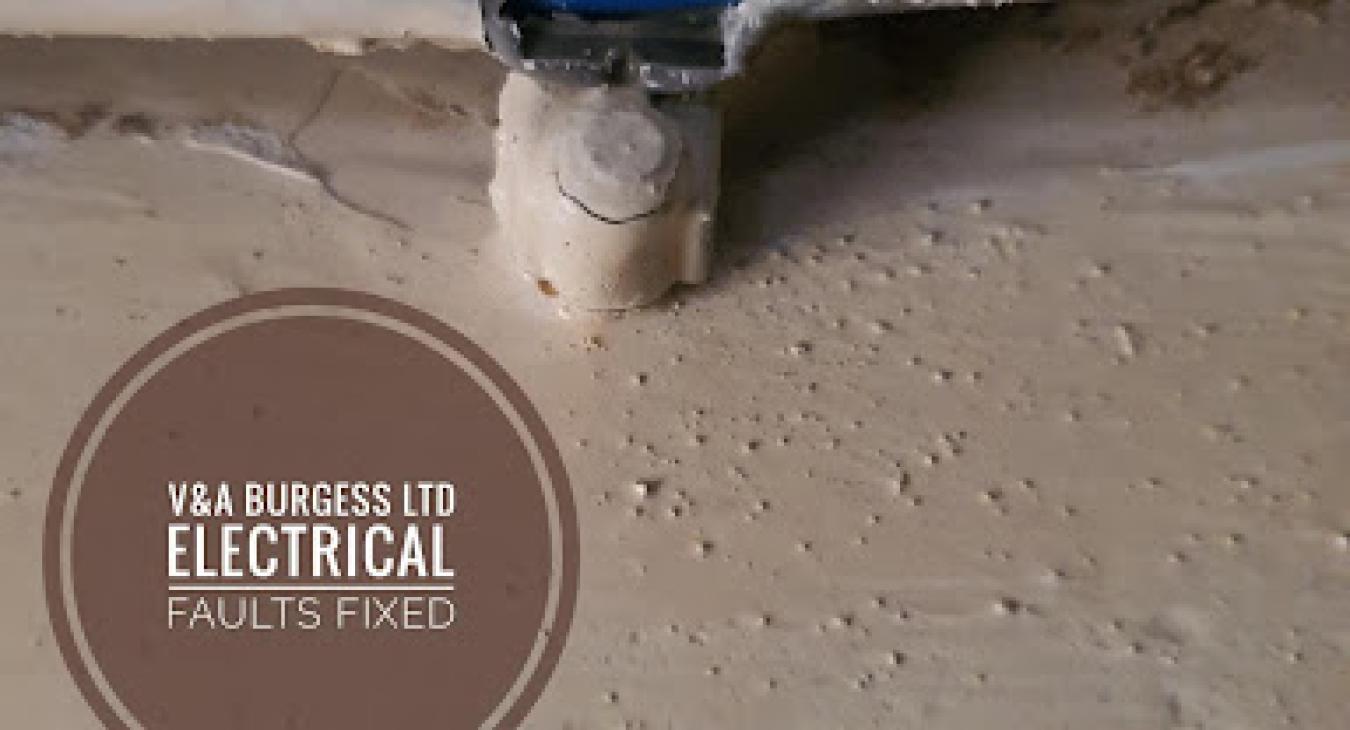
Table of Contents
1) Electrical cabling in our homes should be installed to minimise the risk of accidental damage thereby limiting the risk of electric shock, arcing, and sparking and electrical system damage.
Occasionally, despite the best efforts of the electrician carrying out the work, electrical systems can become damaged through no fault of their own 😊 The cable in the photograph was found on one of our electrical inspections and the damage had meant that the single-coloured insulation was now visible meaning no cable sheath for protection. This was one of the items that was flagged up as potentially dangerous and required putting right. Damaged cabling is often ignored or misunderstood by users of electrical installations and this can lead to serious issues further into the future.
Cable damage can occur in many different ways:
- Overloading cables
- Incorrectly wiring cables and electrical systems
- Accidental damage
- Heat Damage
- Mechanical Strain
- Overloaded Cables
When cables are forced to carry more electrical current than they can safely handle, the result is cable damage, overheating and shorting out. The action of a cable being forced to handle excessive current can damage the cable insulation inside the cable that surrounds the copper conductors, as a result, microscopic cracks can occur in the insulation causing current leakage from the circuits. This current leakage is often detected by RCD devices which then trip, assuming there is an electric shock occurring in the electrical system.
Back to top2) Incorrectly Wiring Cables and Electrical Systems⚠️
When installing cables, it is easy to accidentally cross the wires and insert the incorrect conductors into the incorrect terminals. Combined with a lack of adequate testing following installation, these mistakes can go unnoticed until the system is then energized causing potential cable damage.
A common installation mistake when using flexible cables is to insert the fine stranded ends into a screw terminal. This chews up the fine copper strands and causes cable damage, poor contact, excessive resistances and therefore heat and possible secondary cable damage due to the ensuing melting and burning.
Fine stranded cables should be terminated using the correct sized ferrules and appropriate crimping tool to ensure that a solid connection is formed between the cable end and the screw terminal.
Back to top3) Accidental Damage⚠️
All manner of accidental damage can occur to cabling once installed. In our homes we regularly drill into walls and ceilings and occasionally there can be hidden cables that can be punctured by the drill. This can lead to electric shock, tripping of the consumer unit and costly repairs caused by damaged cables. Other accidental damage can occur to flexible cord of appliances where appliances may crush their own power supply cable in the case of fridges, melted cables installed too close to hot appliances such as ovens and hobs and the classic...running over the electric cable with the mower.
Back to top4) Heat Damage⚠️
Heat damage to cables can occur either in environments where the cable is subject to excessive temperatures or where temperatures are generated through loose connections or malfunctioning equipment. The problem with heat damage to cabling is that the effects cannot be reversed. Once PVC insulation has been excessively heated, microscopic cracks can form causing current leakage. Heat damage is common on areas around immersion elements where loose connections, poor terminations and higher temperatures can all play a part in ruining the electrical connection and cabling.
Back to top5) Mechanical Strain⚠️
There are many electrical installations out there where poor wiring installation practice has been carried out. When cables are installed in situations where they are subject to mechanical strain, this can cause connections to become loose or fall apart creating dangerous live parts to become exposed. Equipment can become damaged, shorting out and arcing can occur and complete failure of electrical systems can result.
If there is a damaged cable somewhere in your wiring system it can cause havoc. A newer fuse box / consumer unit will possibly pick up the damaged cable and alert you to the issue by tripping the affected circuit off. An older unit will be more likely to miss some types of cable damage and this can result in more extensive damage being done before anything happens to alert you to the problem.
If you are concerned about the condition of your electrics then give us a call to arrange a visual inspection or a very thorough electrical inspection.
📧 Contact us.
Back to top









